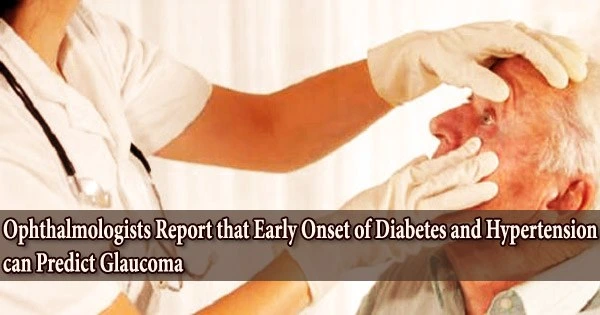According to a recent study by UT Southwestern researchers, people are more likely to acquire primary open-angle glaucoma (POAG), the main cause of irreversible blindness worldwide, the sooner they have Type 2 diabetes or hypertension in life.
The research, which was published in Clinical Ophthalmology, may help develop improved screening procedures for POAG, which can cause up to 90% of glaucoma cases.
“Currently, we lack the tools to cure glaucoma, but with enough advanced notice, we can preserve patients’ vision. Early detection of glaucoma is the key to better control of intraocular pressure and preventing blindness,” said study leader Karanjit Kooner, M.D., Ph.D., M.B.A., Associate Professor of Ophthalmology at UTSW.
POAG affects tens of millions of people worldwide. Dr. Kooner noted that patients are typically diagnosed in the latter stages of the condition, when vision has already been severely affected, because this disease has minimal symptoms in its early stages.
Even though Type 2 diabetes, hypertension, migraines, and obstructive sleep apnea have been identified as risk factors for POAG, it is unclear how these conditions can affect the disease’s start.
Dr. Kooner and his associates gathered information from the medical records of 389 POAG patients who were all seen by Dr. Kooner between June 2019 and December 2019 at the UTSW Eye Clinic in order to respond to this question.
The age at which POAG first appeared was not associated with migraines or obstructive sleep apnea, according to statistical modeling conducted by the researchers.
Currently, we lack the tools to cure glaucoma, but with enough advanced notice, we can preserve patients’ vision. Early detection of glaucoma is the key to better control of intraocular pressure and preventing blindness.
Karanjit Kooner
However, the researchers discovered a strong correlation between the age of Type 2 diabetes and/or hypertension diagnosis and the beginning of POAG. Patients tended to develop POAG more quickly the sooner they presented with one or both of these disorders.
Dr. Kooner added that POAG, another ailment with a vascular basis, may predispose patients to Type 2 diabetes and hypertension since these conditions damage the blood vessels of the optic nerve and retina.
Adding Type 2 diabetes and hypertension to the list of factors that can prompt POAG screening, along with a family history of POAG, elevated intraocular pressure, and Black race, he said, could result in an earlier diagnosis of POAG, protecting patients’ vision and quality of life. If these connections hold up in further research, he added.
Other UTSW researchers who contributed to this study include Jeffrey Wooliscroft, Rubeel Akram, Hafsa Zuberi, Betty Tong, Jane Gu, and Aaron Hurd.
This research was funded by grants from Research to Prevent Blindness, the National Institutes of Health (P30 EY030413, UL1TR001105), and the UT Southwestern Medical Student Research Program.





